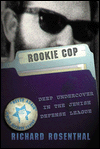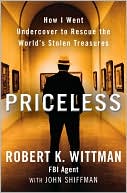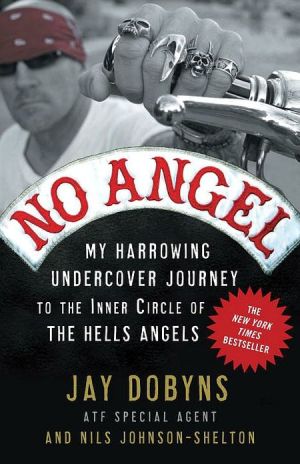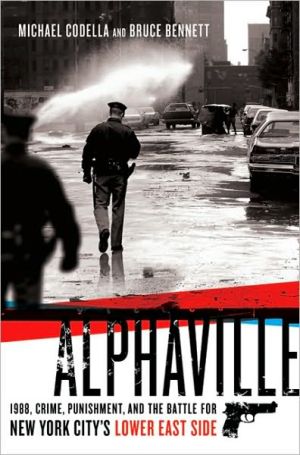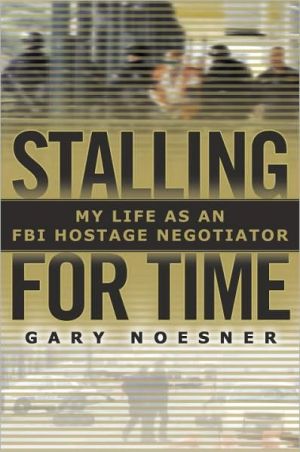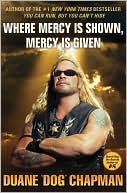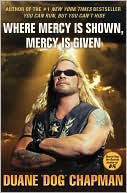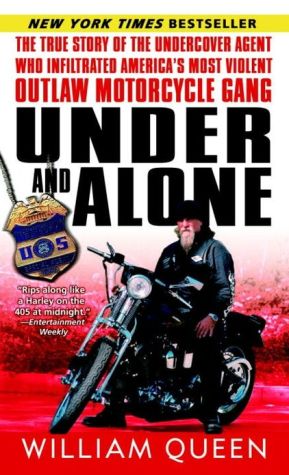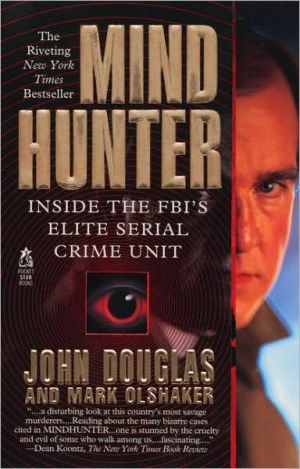Rookie Cop: DeepUndercover in the Jewish Defense League
About the author\ Before becoming Chief of Police in Wellfleet, Massachusetts, Richard Rosenthal spent twenty years in the New York City Police Department, where he ran the Heavy Weapons and Undercover Weapons Training programs and, as a detective in the Bronx dealt with homicide, narcotics, and armed robbery. Before joining the NYPD, he worked for U.S. Air Force military intelligence as a Russian language specialist. Pocket Books published his two popular books of police craft, Sky Cops and...
Search in google:
In the heady summer days of 1970, an untrained police recruit, recently returned to Brooklyn from a tour in the air force, was secretly assigned by the NYPD to infiltrate an up-and-coming urban terrorist organization described only as "a black cloud on the horizon." It was led by a charismatic rogue rabbi, whose impact would be felt around the world. Administered his oath of office in an empty building, stripped of his badge, forbidden to attend the police academy or mingle with other officers at any time, Richard Rosenthal advanced through the ranks of the Jewish Defense League from its early days of street intimidation through its production of incendiary weapons, its international airline hijacking attempt and ultimately its bombings, until he became a firearms instructor, oversaw their weapons arsenal, and acted as body guard to the notorious Rabbi Meir Kahane. With a cast of characters that includes Joe Colombo, the Brooklyn mob, the Ku Klux Klan, former French President Pompidou, the grave diggers union, and the Soviet Mission to the United States, Rookie Cop is not only the very human story of a young cop on an outrageously dangerous assignment but one of the wackiest true police stories ever told. Publishers Weekly "Rosenthal does a solid job of reconstructing his undercover stint."
Excerpt From the First Chapter: \ Sol Hurok immigrated to the United States from the village of Pogar, Russia in 1906 and made a small living for himself by producing concerts for New York City's burgeoning labor societies. Over the years, the workers' craving for high-brow entertainment grew to such an extent that his concerts were staged in the enormous amusement hall built by P.T. Barnum, the Hippodrome. Hurok became the personal manager of the great Afro-American contralto Marian Anderson and arranged the first U.S. tour for the young violin sensation and son of a poor Israeli barber, Itzak Perlman. Within several generations Hurok became known as The Impresario, importing such world class entertainment as the Comédie Française and the Old Vic to perform for American audiences. A more beneficial, or benign profession would be hard to imagine. Except that the talent he imported also included the Bolshoi Ballet and the Moiseyev Dance Company and there were those who wished to disrupt the ties between the United States and the then-Soviet Union — by any means necessary.\ Hurok had been warned many times that he was to stop bringing in Soviet performers. Bottles of ammonia had been uncorked during a number of his events as well as shows produced by Columbia Artists, a rival company which also imported Russian talent. Live mice and stink bombs had been used to cause upset to the audiences. Some performances had been disrupted by shouting. Annoying as those actions might have been, they hadn't proven effective enough. It was thought that perhaps smoke bombs, delivered right to Hurok's office, as well as those of Columbia Artists, would make the point.\ A young man was given some money to buy the chemicals (hypnole and an oxygenator) in order to produce the devices. Although an effective smoke bomb needed only a few ounces of the two materials when combined, he purchased a hundred pounds of it, the reasoning being, if a little smoke was good, a lot of smoke would be better. Then he and another fellow made up two bombs, each weighing thirteen pounds and placed the bombs inside two cheap attaché cases, a small fuse jutting inconspicuously outside each, ready for the match.\ Because the members of the group who came up with this idea were on probation or facing serious criminal charges from recent arrests, it was decided that four fresh faces would be used to plant the two devices. Two teams of high-school age youngsters were to be sent out with the packages; one pair to Columbia Artists, the other young men to Hurok's. They first met at their headquarters in Brooklyn. There they were shown how to light the fuses and told where to deliver the smoke bombs. The teams then got into one of the young men's cars and headed into Manhattan.\ The first device was set off at the Columbia Artists office at 9 A.M. As it was still early in the day, only a handful of employees had arrived at work. When the device went off at the office's entrance those inside were able to safely escape via a rear exit. No one was injured. It was about 9:30 A.M. when the pair assigned to Hurok's office at 6th Avenue and 56th Street got off the elevator at the 20th floor. One of the young men went up to a receptionist and inquired about purchasing tickets for some future performance. While the receptionist was busy searching out the information, the two teenagers placed the attaché case under a table, lit the fuse and quickly departed.\ A moment later, one of Hurok's employees noticed smoke coming from across the room. Surprised, he began to rise from his seat when suddenly that part of the room all at once became engulfed in an intense red, pink and purple flare. He ran from the room. A fraction of a second later the ignited chemicals began an incendiary fire whose temperature reached 1,700 degrees Fahrenheit. The heat was so intense that lethal chemical reactions took place. Phosgene gas was released from the plastic covering of the blazing furniture. A gas that had proven deadly on the battlefields of World War One would now prove equally effective here. Unlike Columbia Artists, there was no rear exit at Hurok's. The reception area was an inferno, those inside prisoners. The poison fume spread at a leisurely pace as it made for its victims. Some attempted to fight back, tossing waste buckets of water into the fire. But, at 1,700 degrees water ignites. The people retreated. Behind them metal objects began to melt. With no where to run workers began smashing panes of glass, letting in fresh air. This act saved their lives. Others found themselves trapped in less fortunate circumstances. Three women, including twenty-seven year old Iris Kones, took refuge in an inner office. Tendrils of black smoke soon worked its way under their door. The small space quickly filled with the poison and the three lost consciousness. It took some time for rescuing firemen to locate the three women. Oxygen revived two. But not Kones. She was dead. Before those responsible were aware they had killed a young Jewish woman, one of those in charge of the operation had already made the obligatory call to the media, saying: "This culture destroys millions of Jews. Cultural bridges of friendship will not be built over the bodies of Soviet Jews. NEVER AGAIN!"\ At first, the New York Police Department had nothing but a very strong hunch about those responsible for the bombing. The motive, the tactics, and the phone message all pointed to a small group of extremists who were almost unknown when I was assigned to infiltrate them two years before, and in a sadly ironic phrase had been described to me then as a black cloud on the horizon.
Chapter 1Joining the Force1Chapter 2First Contact11Chapter 3The Detectives19Chapter 4Becoming More Involved23Chapter 5Working My Way In31Chapter 6Oy!47Chapter 7Breakthrough55Chapter 8Oz A63Chapter 9Race Riot75Chapter 10Summer Camp79Chapter 11The Weapons Cache83Chapter 12Guns and Bombs87Chapter 13Wired103Chapter 14No Bomb Yet?113Chapter 15More Bomb Games123Chapter 16Finally129Chapter 17Retaliation137Chapter 18Strange Bedfellows and Annoying the Soviets145Chapter 19Old Enemies, New Friends151Chapter 20Out of the Kitchen and Into the Fire161Chapter 21Not With A Bang But A Whimper...167Afterword187Acknowledgements and Sources191The Author193
\ Kirkus Reviews"A strange true tale of a Jewish NYPD cadet recruited into the department's elite intelligence unit to spy on the Jewish Defense League, offering vivid portraits of a politically incendiary era and revealing secrets of intrusive police tactics...This is a well-tuned portrait of the stress and acrimony that permeates such radical cliques, and of the lonely, paranoid personalities at their centers — and it offers insights into the radically charged violence of the early 1970s...Rosenthal has a fine eye for human detail and a cop's mordant sensibility. Altogether an exciting tale of unusual police practices, and a solid portrait of a quintessential fringe radical group inhabiting insecure, volatile times."\ \ \ \ \ Library Journal"Quite compelling…leaving the reader wanting to know more about the crimes perpetrated by the JDL, the undercover operations against it, and its head, Rabbi Meir Kahane."\ \ \ Publishers Weekly"Rosenthal does a solid job of reconstructing his undercover stint."\ \ \ \ \ Publishers WeeklyIn 1969, just before he was to be sworn in as a New York City police officer, Rosenthal was recruited as an undercover agent for the force's "intelligence gathering" department. His job: infiltrate the Jewish Defense League, the militant group led by Rabbi Meir Kahane that had disrupted public hearings and assaulted some members of other extremist groups, and was seen to have the potential for more trouble. So Rosenthal told people he decided not to join the force, drove a cab as cover and--sans gun, badge or training--quickly became a regular at demonstrations protesting the Soviet Union's unwillingness to let Jews emigrate. Now a police chief in Wellfleet, Mass., and the author of several books on police craft and one novel, Rosenthal does a solid job of reconstructing his undercover stint, detailing some tense situations, like how he regularly defused suspicion that he was, in fact, an undercover cop. His presence was opportune: the JDL was expanding its violent aims, gathering weapons and bomb-making materials. Kahane and others were arrested, thanks in part to the then-departed Rosenthal, after the bombing of a Soviet trade office. However, Rosenthal rarely widens his focus to discuss how he (and his wife) managed the stress of his undercover work. Also, despite his acknowledgment that Kahane "was neither a saint nor a sinner" and his observation that most JDL members represented a segment of population whose needs, fears and concerns weren't addressed by established Jewish organizations, Rosenthal doesn't say enough about the broader origins of the JDL and its place in New York history. (Aug.) Copyright 2000 Cahners Business Information.\|\ \
